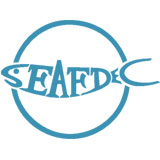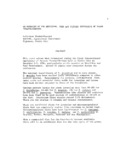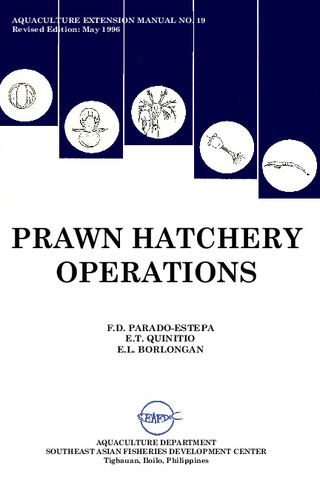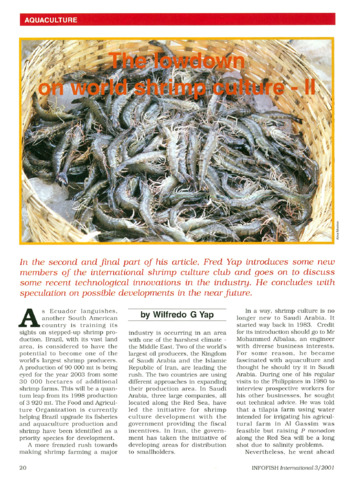Variation in the biochemical composition of Penaeus monodon tissues during the reproductive cycle.
Share
Abstract
The gonadosomatic index (GSI) and the hepatosomatic index (HSI) were determined for wild-caught, eyestalk ablated Penaeus monodon at 5 reproductive stages (I to V). Tissues of the muscle, ovary and hepatopancreas in each stage were analyzed for crude protein and amino acid composition.
Results showed that the GSI increased from stage I (immature) to IV (fully mature) but declined at stage V (spent) while the HSI did not change significantly (P less than or equal to 0.05). Muscle protein content did not vary markedly from stage I to V except for a slight lowering at stage III (late maturing). Ovarian protein increased from stage I to IV and decreased at stage V while from stage II, the reverse was true for hepatopancreas.
Generally, few significant differences in amino acid content were found. Glutamic acid content significantly differed among stages in all three tissues. In addition, phenylalanine in the muscle, histidine and lysine in the ovary and arginine and luecine in the hepatopancreas differed among stages. The muscle had slightly higher arginine and gluatmic acid contents than the ovary and hepatopancreas but was lower in threonine and valine. The ovary had the lowest glycine content.
Results showed similar amino acid levels among tissues and maturation stages, suggesting that amino acids are fixed and not affected by much variation.
Suggested Citation
Dy-Peñaflorida, V., & Millamena, O. M. (1990). Variation in the biochemical composition of Penaeus monodon tissues during the reproductive cycle. The Israeli Journal of Aquaculture-Bamidgeh , 42(3), 84-90. http://hdl.handle.net/10862/1255
Subject
Taxonomic term
Collections
- AQD Journal Articles [1248]
Related items
Showing items related by title, author, creator and subject.
-
An overview of the nutrition, feed and feeding techniques of prawn penaeid/shrimps
Piedad-Pascual, Felicitas (Philippine Council for Aquatic and Marine Research and Development, 1989)This paper echoes what transpired during the first International Conference of Penaeid Prawns/Shrimps held in Iloilo City in December 4-7, 1984, particularly on the Nutrition nd Feed Development. Around 25 papers were ... -
Prawn hatchery operations
Parado-Estepa, Fe D.; Quinitio, Emilia T.; Borlongan, Emeterio L. (Aquaculture Department, Southeast Asian Fisheries Development Center, 1996-05)The manual, an updated version of the 1984 SEAFDEC/AQD manual, presents the underlying principles and step-by-step instructions of prawn larval and post-larval rearing. The techniques described are not only applicable to ... -
The lowdown on world shrimp culture - II
Yap, Wilfredo G. (INFOFISH, 2001)This paper introduces some new members of the international shrimp culture club and goes on to discuss some recent technological innovations in the industry, particularly the polyculture of tilapia (mainly Oreochromis ...






